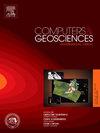Evaluating key parameters impacting the performance of Seis Seg Diff model for seismic facies classification
IF 4.2
2区 地球科学
Q1 COMPUTER SCIENCE, INTERDISCIPLINARY APPLICATIONS
引用次数: 0
Abstract
Facies are a body of rock that is distinct from adjacent rock units based on observable characteristics such as composition and texture. They are sought out in subsurface characterization tasks because of the valuable information they provide about past environments and geological processes. In seismic data, facies express distinct reflection patterns and are traditionally interpreted manually using seismic attributes. However, manual interpretation is typically time-consuming and biased by the interpreter. Automatic interpretation methods that capitalize on the predictive ability of deep learning have been proposed with relative success. However, these methods are data-intensive with practical deployment limitations. SeisSegDiff is a novel model that draws from the representations learned by diffusion models to classify the facies accurately with limited training data. In this paper, we investigate the quality of the representations learned by the diffusion model and the impact of the model hyperparameters on its performance. We found that for a diffusion denoising encoder-decoder network, the middle decoder blocks [5–13] at the later time steps of the diffusion process [0–250] had the most informative representations for the facies discrimination. For the few shot capability, the model had a mIoU of 0.75 when it was trained with only 3 inlines and its performance consequently increased for more training cross sections with 0.83 when trained with 5 inlines and crosslines, outperforming the state-of-the-art with only ∼2% training data. Furthermore, we found that the model is robust in the presence of faults but struggles with regions with complex salt structures. Our results demonstrate that well designed SeisSegDiff model parameters can greatly speed up subsurface characterization tasks in practical field settings with real seismic and well data. We anticipate the model to be a starting point for more sophisticated applications of the diffusion model for geophysical data interpretation and processing. For example, the learned representations from the diffusion model can lend themselves to the development of a global reservoir property inversion model.
影响Seis Seg Diff模型地震相分类性能的关键参数评价
相是一种岩石体,它根据可观察到的特征,如成分和结构,与相邻的岩石单元区别开来。它们在地下表征任务中被寻找,因为它们提供了有关过去环境和地质过程的宝贵信息。在地震数据中,相表示不同的反射模式,传统上使用地震属性手动解释。然而,人工口译通常是耗时的,而且译员有偏见。利用深度学习预测能力的自动解释方法已经被提出,并取得了相对的成功。然而,这些方法是数据密集型的,具有实际部署限制。SeisSegDiff是一种新的模型,它利用扩散模型学习到的表示,在有限的训练数据下准确地对相进行分类。在本文中,我们研究了扩散模型学习表征的质量以及模型超参数对其性能的影响。我们发现,对于扩散去噪编码器-解码器网络,扩散过程后期时间步长的中间解码器块[5-13]对相判别的信息表示最多。对于少量的射击能力,当仅用3条直线训练时,该模型的mIoU为0.75,因此,当使用5条直线和交叉线训练时,其性能在更多的训练横截面上提高到0.83,仅用~ 2%的训练数据就优于最先进的技术。此外,我们发现该模型在存在断层的情况下具有鲁棒性,但在具有复杂盐构造的地区则存在困难。我们的研究结果表明,设计良好的SeisSegDiff模型参数可以极大地加快实际油田环境中真实地震和井数据的地下表征任务。我们预计该模型将成为扩散模型在地球物理数据解释和处理中的更复杂应用的起点。例如,从扩散模型中学习到的表示可以用于开发全局储层属性反演模型。
本文章由计算机程序翻译,如有差异,请以英文原文为准。
求助全文
约1分钟内获得全文
求助全文
来源期刊

Computers & Geosciences
地学-地球科学综合
CiteScore
9.30
自引率
6.80%
发文量
164
审稿时长
3.4 months
期刊介绍:
Computers & Geosciences publishes high impact, original research at the interface between Computer Sciences and Geosciences. Publications should apply modern computer science paradigms, whether computational or informatics-based, to address problems in the geosciences.
 求助内容:
求助内容: 应助结果提醒方式:
应助结果提醒方式:


